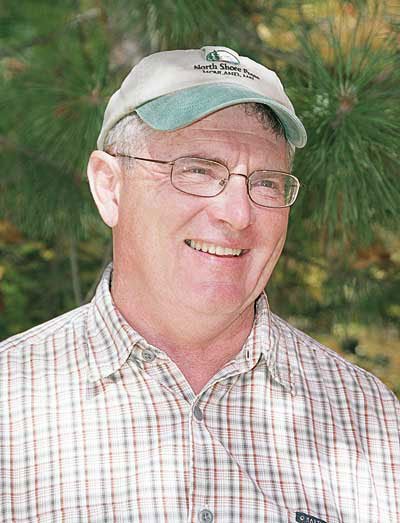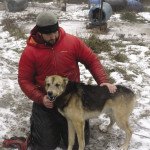What will the New Year bring? A friend in the taconite industry offered a prediction.
“The crappie lakes on the Iron Range are gonna take a hit this winter,” he said.
It’s a wry take on a grim situation. Hundreds of laid off mine workers will have lots of time for ice fishing this winter. The American steel industry is in the midst of very hard times. Aside from increased fishing pressure, about the only prediction anyone can make for the Range right now is that 2016 brings economic uncertainty.
Also uncertain is the fate of the Polymet copper mining project, which is completing a decade of environmental review. Without going into the politics of the issue, a reasonable prediction is the permitting process for the project will begin (the next step after environmental review) and that it will be challenged in court by the environmental community. Polymet certainly won’t be digging holes in the ground this year.
If anything is certain in the north, it is that hunters in the forested regions will have a slow deer season again in 2016. While the winter so far has been mild, many hunters of my acquaintance saw precious few whitetails last November. Some were less than amused by the DNR’s decision to issue antlerless permits in their areas when the population was in the earliest stage of recovery. Coupled with the downturn in logging activity that occurred over the last 10 years, it seems likely that there will be few deer hanging meatpoles of many traditional hunting camps north and east of Duluth.
Will fewer deer mean more moose in northeastern Minnesota? This observer isn’t holding his breath. With the exception of Cook County’s Gunflint Trail area, moose seem to be spread pretty thin across their range. Most of this country contains precious few deer. It is fair to say there were more of both species during the most recent heyday of moose in the 1980s and 90s.
Across the state, Minnesota upland hunters can likely expect no more than fair to middlin’ pheasant hunting next fall, regardless of weather conditions. The reason is that Minnesota currently doesn’t have enough grassland nesting habitat to support a robust pheasant population. Hunters can thank our Congressional delegation for that. Politicians are acutely aware of who contributes to their campaigns. Rank-and-file hunters or families seeking something other factory-farmed, genetically-modified processed food just don’t make the cut. When it comes to agriculture, Minnesota politicians are four-square behind ditch-to-ditch row crop farming. They may talk a good game regarding conservation, but don’t expect them to mount an effort to restore grasslands such as CRP. Unless there is a sea change in agricultural economics, pheasants, deer and other farmland wildlife will remain less abundant than it was a decade or more ago.
What about ducks? It is easy to predict the skies won’t be darkened by the fall flight. And it’s also easy to predict the hunting will follow a similar pattern to recent years. With an earlier opening date in September, hunters will get a few days to swat the locals before they wise up. After that, it’s a waiting game. Get a cold front at the right time and some birds will move through the state. Hunting will be better in some locales than others. Nowhere will it be like “the good old days.”
What about fishing? It isn’t a prediction to say Mille Lacs will be a mess due to changing ecological conditions, muddled management and the political elephant in the room called state/tribal co-management. If there is truly a way to move forward here, it has less to do with walleyes than it does with merging inherently adversarial co-management into a single management scheme. This will require some serious, out-of-the-box thinking. Political and racial hang-ups on both sides of the fence, not to mention the personalities of the present political players, almost certainly render this impossible at present. We may need to wait a generation or longer for this to occur.
It’s also not a prediction to say muskie fishing will continue to grow in popularity and waters supporting muskie will continue expanding in the state. It is less easy to predict how muskie mania will be accepted by other anglers, lake home owners and others with an interest in our waters. Fisheries science seems to support the argument that muskie introductions into new waters don’t disrupt existing game fish populations. But when the argument comes from the same agency that will stop and search your boat to find an invasive weed or clam, it sounds like, well, doublespeak. At any rate, we can predict proposed muskie introductions will remain controversial in 2016.
The Minnesota DNR is moving toward geographically based northern pike management in an effort to restore bigger fish in many waters now overpopulated with hammer handles. We can predict the agency may face geographically based problems not with the science behind the management strategy, but with public acceptance of new regulations that may prevent people from keeping what they consider to be eating-sized pike. The catch-and-release ethic doesn’t seem to extend to northern pike.
Another prediction is that mainstream Minnesotan’s will remain largely oblivious to declining water quality across the agricultural region and aquatic habitat loss there and throughout cabin country. On the former, Governor Dayton and the Minneapolis Star-Tribune have done an excellent job of publicizing the extent and gravity of the problem. Dayton has pledged to find policy solutions that will lead to water quality improvements. We hear little, though, about aquatic habitat loss, aside from reports from fisheries scientists. Thus with every mowed or rip rapped shoreline and every weed-free, sand-blanketed beach, the loss continues.
But this leads to one final, if contradictory prediction. Minnesotans will continue to enjoy all four seasons outdoors. If gasoline prices remain low, they’ll likely head for their favorite outdoor playgrounds in record numbers weekend after weekend. If the fishing is slow on their favorite crappie lake, whitetails are scarce, pheasants few or their opportunity to eat fresh Mille Lacs walleye filets is regulated out of existence, they’ll immediately know where to place the blame. It will be the DNR, the wolves, the farmers, the Indians or the political party they don’t vote for. What they won’t do is roll up their sleeves and commit to making a positive difference for the outdoors. They didn’t do it last year. Why should we expect them to change in 2016?




